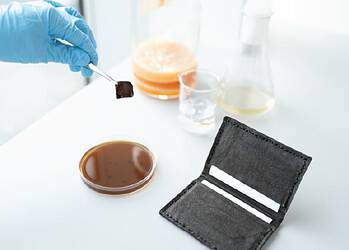New research at Rice University describes how bulk quantities of carbon-bearing material can be quickly and cheaply turned into graphene flakes. The secret? Intense bursts of heat.

Image credits Credit: Jeff Fitlow / Rice University.
Waste food, plastics, wood, paper, clothes — carbon is everywhere around us. The new technique developed at Rice aims to reduce the environmental impact related to the production of concrete and other building materials by creating a source of cheap graphene to reinforce these materials.
Cook at high temperature
“This is a big deal,” says James Tour, a chemist at Rice and the lead author of the paper. “The world throws out 30% to 40% of all food, because it goes bad, and plastic waste is of worldwide concern. We’ve already proven that any solid carbon-based matter, including mixed plastic waste and rubber tires, can be turned into graphene.”
“With the present commercial price of graphene being $67,000 to $200,000 per ton, the prospects for this process look superb.”
Tour says that the “flash graphene” method they developed can convert bulk material (such as coal, plastic waste, or discarded food) into graphene for a fraction of the cost of other comparable methods. It takes just 10 milliseconds of extreme heat — 3,000 Kelvin, about 5,000 °F or 2,800 °C — to turn the source material into graphene flakes.
The team christened its new method ‘Flash Joule heating’, and explained that it takes much less effort and costs to produce graphene than previous approaches. The whole process takes place in a custom-designed reactor that quickly heats up the material and removes all non-carbon elements like oxygen and nitrogen from the resulting gas. If applied on an industrial scale, these gases can be captured “because they have value,” Tour explains. He adds that the system produces very little waste heat (meaning it’s energy-efficient) despite the fact that “this is almost three times hotter than the furnaces we formerly used to make graphene”.
The whole process yields “turbostratic” graphene, which has misaligned layers that are easy to separate. This makes it much simpler to work with than stacked graphene layers, which are hard to pull apart. The team hopes that their method will be employed to create stronger building materials and help protect the environment.
“By strengthening concrete with graphene, we could use less concrete for building, and it would cost less to manufacture and less to transport,” Tour said. “Essentially, we’re trapping greenhouse gases like carbon dioxide and methane that waste food would have emitted in landfills.”
‘We are converting those carbons into graphene and adding that graphene to concrete, thereby lowering the amount of carbon dioxide generated in concrete manufacture. It’s a win-win environmental scenario using graphene.”
Tour explains that adding as little as 0.1% flash graphene in the cement used to bind concrete could lessen its massive environmental impact by a third. Production of cement reportedly emits as much as 8% of human-made carbon dioxide every year, the team notes.
“Turning trash to treasure is key to the circular economy,” said co-corresponding author Rouzbeh Shahsavari. “Here, graphene acts both as a 2D template and a reinforcing agent that controls cement hydration and subsequent strength development.”
The paper “Gram-scale bottom-up flash graphene synthesis” has been published in the journal Nature.






